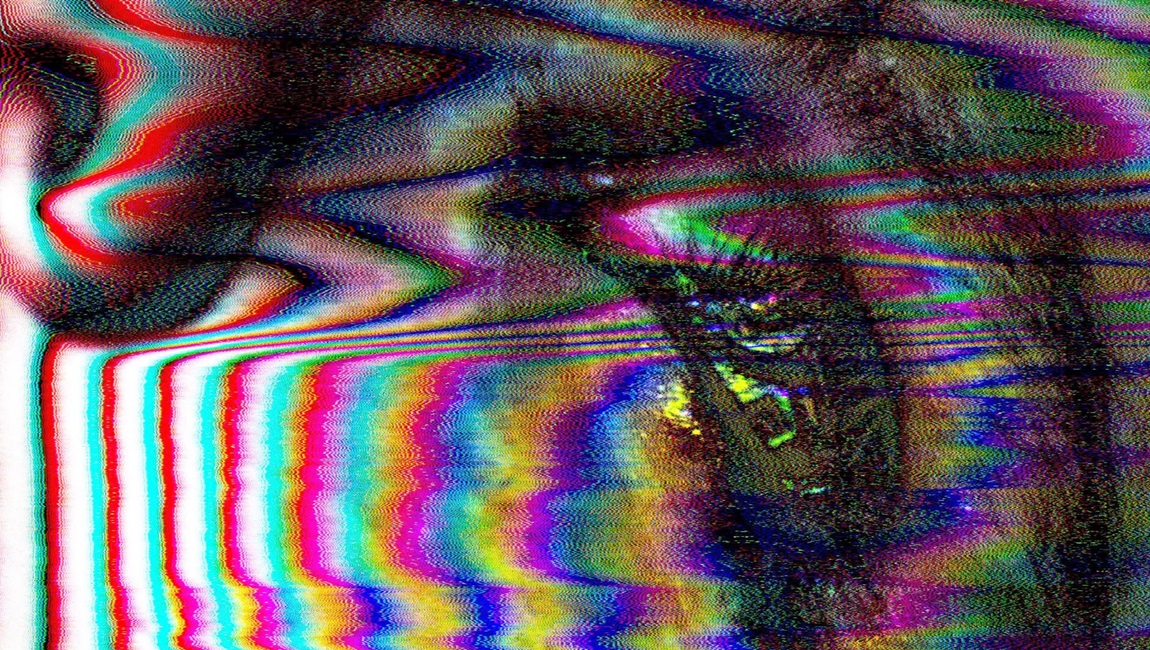In his new short film, Rainer Kohlberger proposes the titular electric kiss as an ultimate pleasure, a literal sum of the neural impulses that produce joy, perhaps recalling another titular device from a notable late 20th-century doorstop-cum-novel. The kiss, though, is quickly labeled as fictive, explicitly an attempt to draw us closer to some unseen reality. The nature of this reality, much as the film, is rigorously obscured as Kohlberger applies complementary layers of distortion. The Electric Kiss is Kohlberger’s second film to feature text, after 2019’s It has to be lived once and dreamed twice. Where that film’s text was delivered as narration by Annika Henderson, here it appears as subtitles, brightly colored in defiance. This is noteworthy, not as a value judgment, but for its dissonance with the traditional purpose of subtitles. Rather than an aid toward understanding, they function as a distraction from the film’s images. Alternatively, they insist on themselves as a part of those images. Either way, the effect, like that of the undermining of the title, is destabilization.
Also aligning itself with It has to be lived once… over Kohlberger’s other films is the presence of non-abstract images. In fact, the film begins with a human figure — or, at least, something in the shape of a human figure. The figure’s motion is chopped up — with Kohlberger alternating between two perspectives, one framing the figure head-on and one adopting a canted point of view — and looped such that each shot advances only slightly in time, nearly repeating. The shape of this transformation of the temporality of the movement is similar to the shape of the visual distortion on the image: neither distinctly analog nor digital, and combining the waves of a CRT display with the discreteness of a malfunctioning JPEG. Under all this, as well as under a VR mask and gloves which — along with black tie attire — obscure all of the figure’s body but a few slivers of an impassive, seemingly human face, is the actual motion. And then two vertical lines, maybe a further artifact of distortion, though now more in line with a degraded film print or maybe the strings of a marionette? It’s impossible to reconstruct the real arc of motion in order to tell if it resembles organic movement or puppetry. This is an actuation of the posthuman landscape the text playfully gestures at, in which technology and the human are genuinely indiscernible.
Indeed, in interpolating organic imagery alongside the digital abstraction he’s known for — one sequence recalls the blinding void at the center of his previous film, Answering the Sun — Kohlberger has produced his most ominous film. The one other “character” appearing alongside the indeterminate puppet, a vaguely monstrous visage claustrophobically framed as to be similarly indiscernible beyond its glowing eyes, might be overly portentous (much like the text), were there not a bit of winking evident. As it is, the film may not be as impactful as the “pure” imagery of Answering the Sun, but, as is the case with Kohlberger’s aesthetic disorientation, the indeterminate space between a foreboding posthuman parable and an overdramatic goof is a productive one to explore.
Published as part of IFFR 2024 — Dispatch 1.







